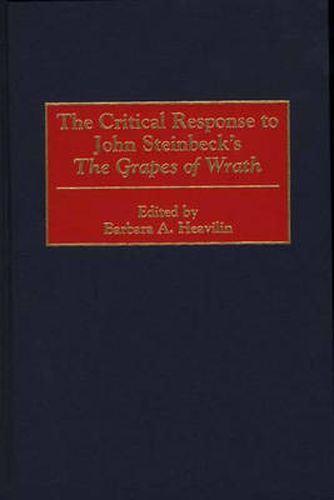Readings Newsletter
Become a Readings Member to make your shopping experience even easier.
Sign in or sign up for free!
You’re not far away from qualifying for FREE standard shipping within Australia
You’ve qualified for FREE standard shipping within Australia
The cart is loading…






When it was initially published in 1939, John Steinbeck’s The Grapes of Wrath instantly became a bestseller. Like many phenomenally popular works, it has elicited a wide range of critical responses. Some earlier reviewers faulted Steinbeck for his apparent sentimentality, while others were disturbed by his portrait of heartless, greedy Americans. Others, too, criticized his aesthetics. His novel became an important part of the American curriculum, many readers praised his epic vision, and modern critics have tended to respond favorably to his works. But despite the publication of four new editions of the book from 1989 to 1997, its place in the American literary canon is precarious.
Through reprints of early reviews and scholarly articles, along with original essays and reviews of the four most recent major editions, this volume traces the critical reception of Steinbeck’s novel. The first part of the book looks back at the first 50 years of the novel’s reception, from 1939 to 1989, while the second examines the response to Steinbeck during the 1990s. Some of these later essays reflect on the lasting significance of the novel, while others note that some scholars and educators have questioned its relevance. The volume includes a chronology and bibliography, and an extensive introductory essay overviews the major trends in Steinbeck scholarship.
$9.00 standard shipping within Australia
FREE standard shipping within Australia for orders over $100.00
Express & International shipping calculated at checkout
When it was initially published in 1939, John Steinbeck’s The Grapes of Wrath instantly became a bestseller. Like many phenomenally popular works, it has elicited a wide range of critical responses. Some earlier reviewers faulted Steinbeck for his apparent sentimentality, while others were disturbed by his portrait of heartless, greedy Americans. Others, too, criticized his aesthetics. His novel became an important part of the American curriculum, many readers praised his epic vision, and modern critics have tended to respond favorably to his works. But despite the publication of four new editions of the book from 1989 to 1997, its place in the American literary canon is precarious.
Through reprints of early reviews and scholarly articles, along with original essays and reviews of the four most recent major editions, this volume traces the critical reception of Steinbeck’s novel. The first part of the book looks back at the first 50 years of the novel’s reception, from 1939 to 1989, while the second examines the response to Steinbeck during the 1990s. Some of these later essays reflect on the lasting significance of the novel, while others note that some scholars and educators have questioned its relevance. The volume includes a chronology and bibliography, and an extensive introductory essay overviews the major trends in Steinbeck scholarship.